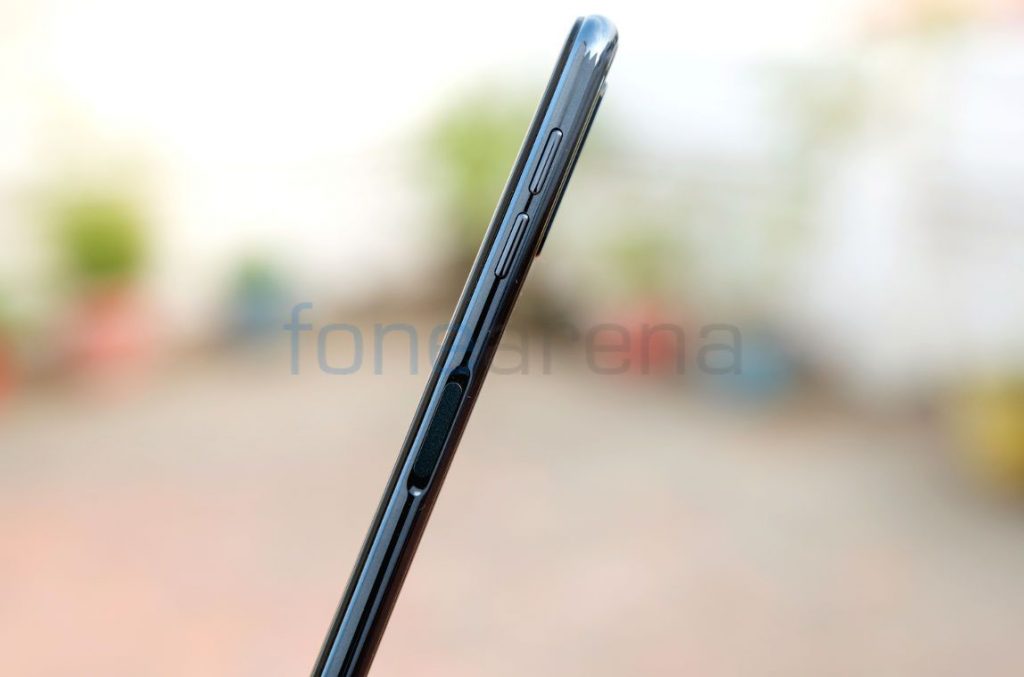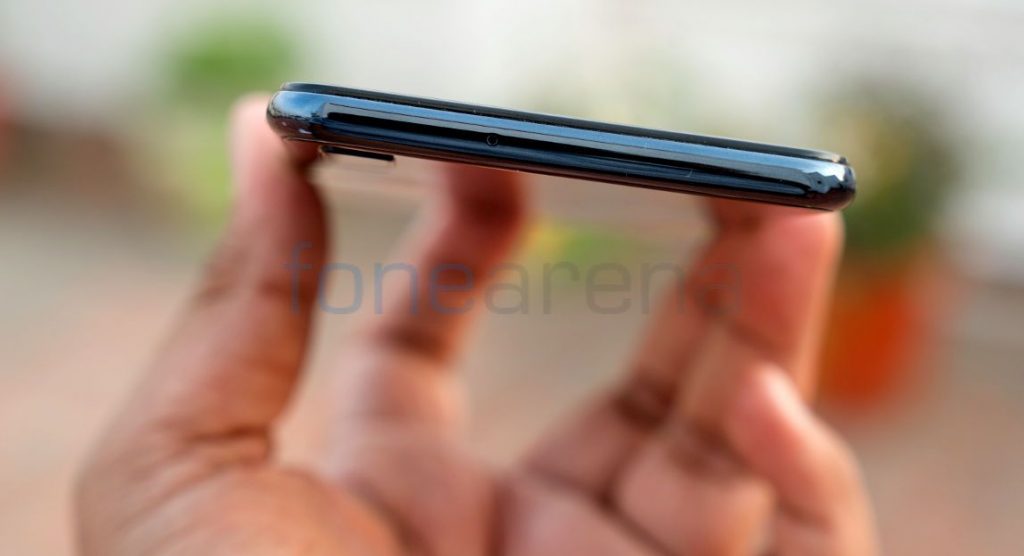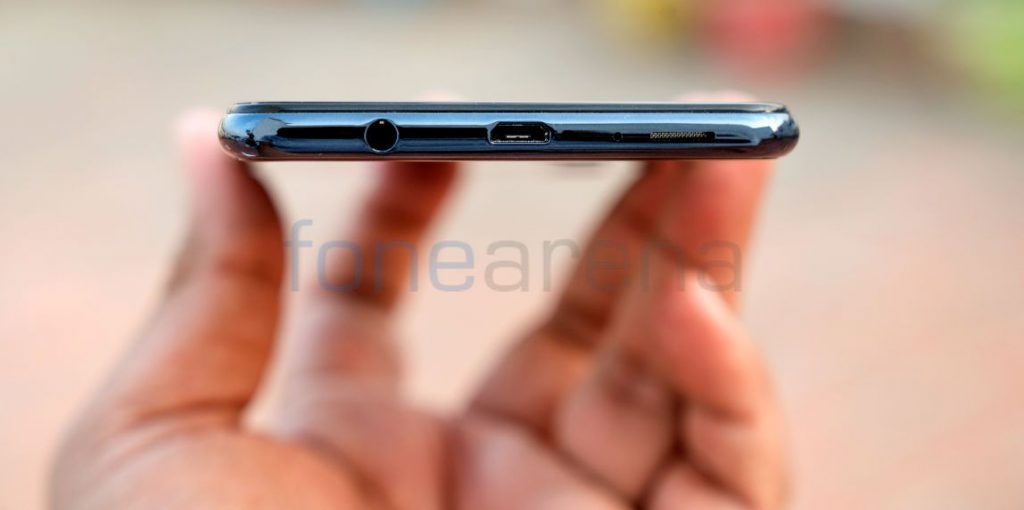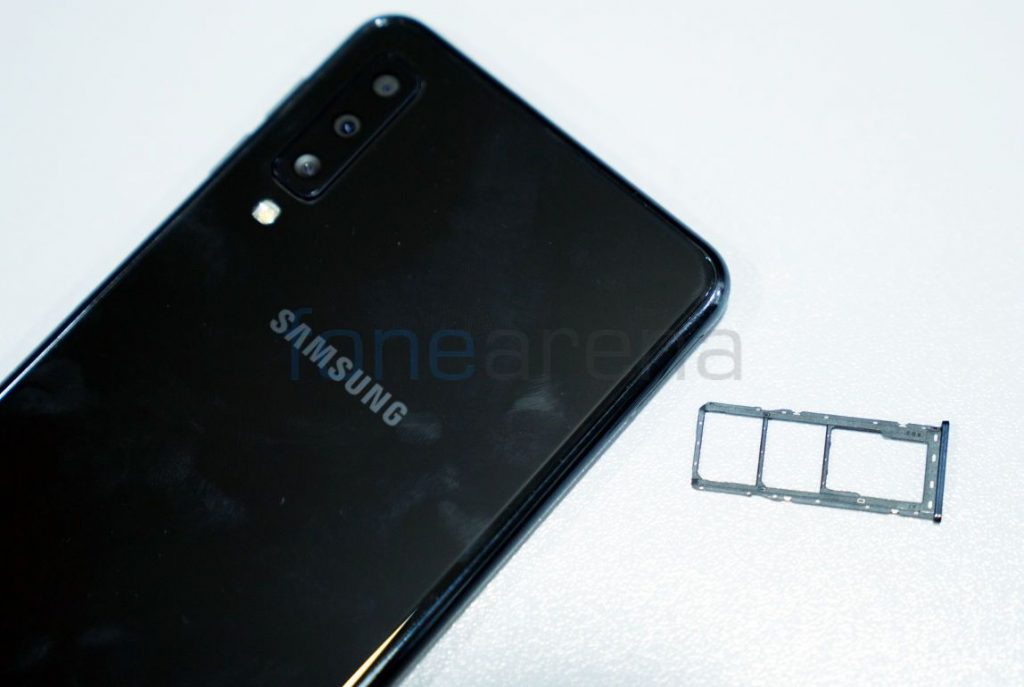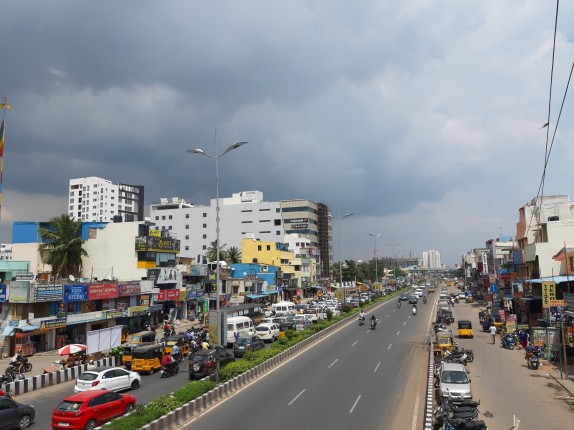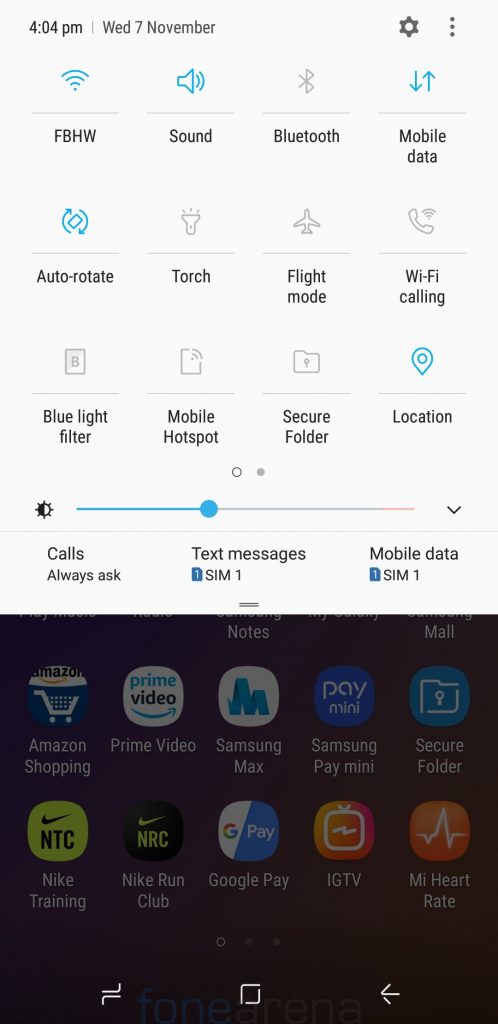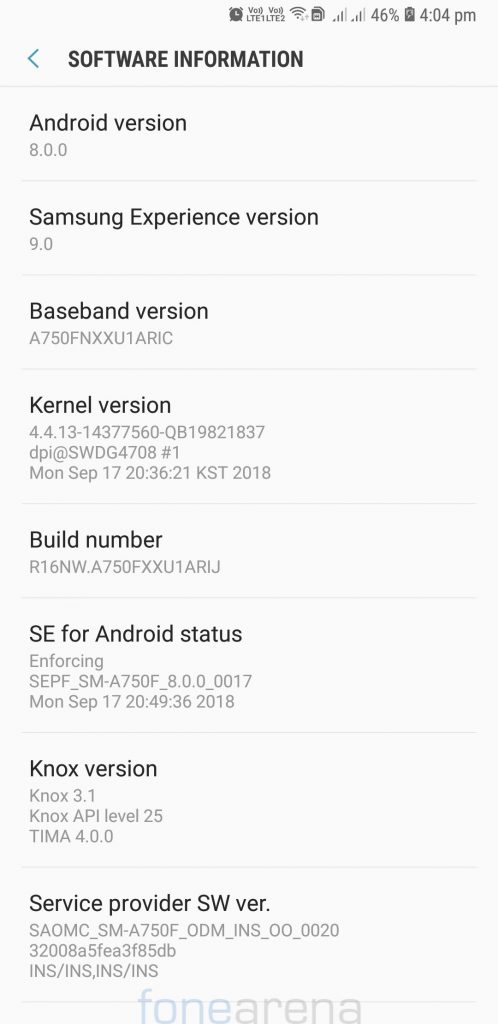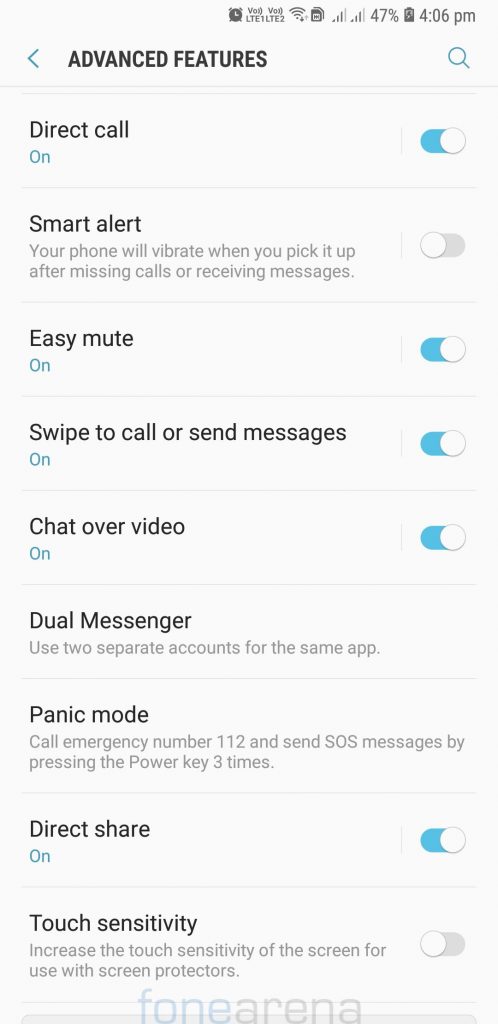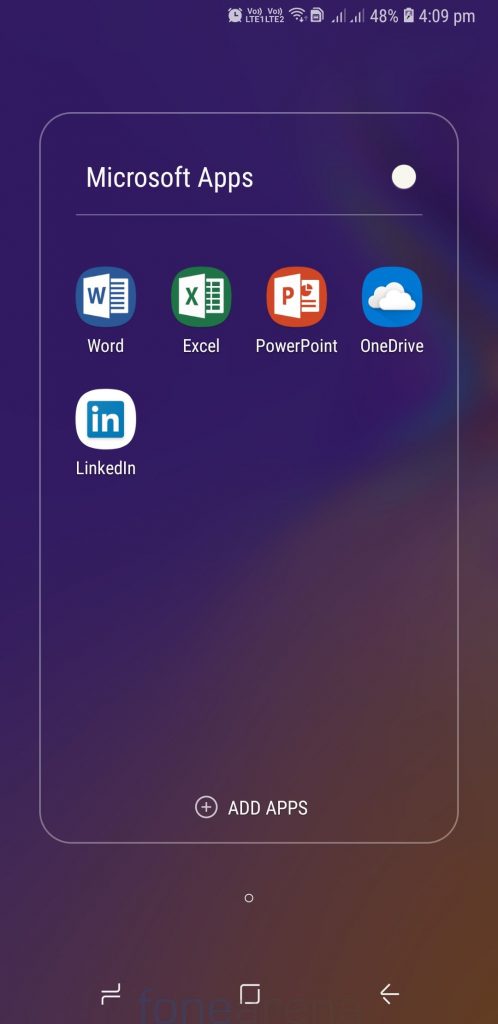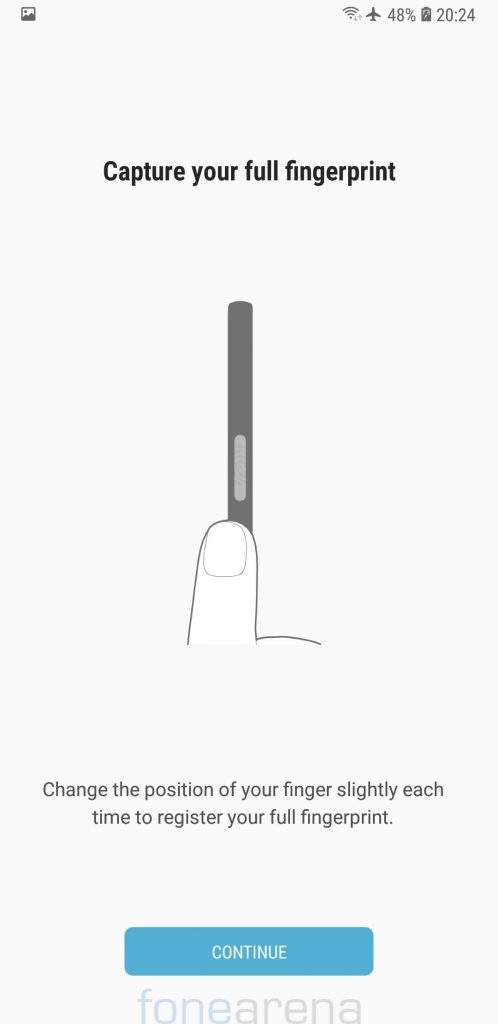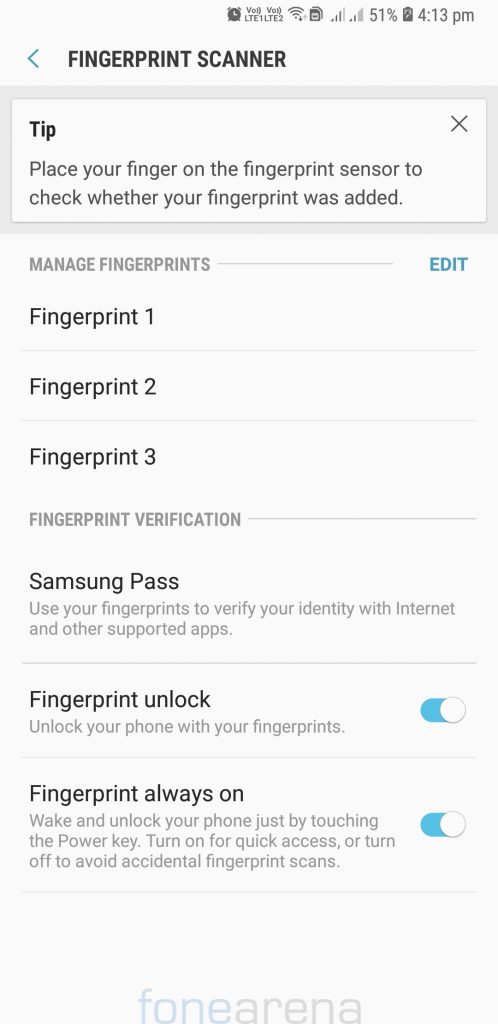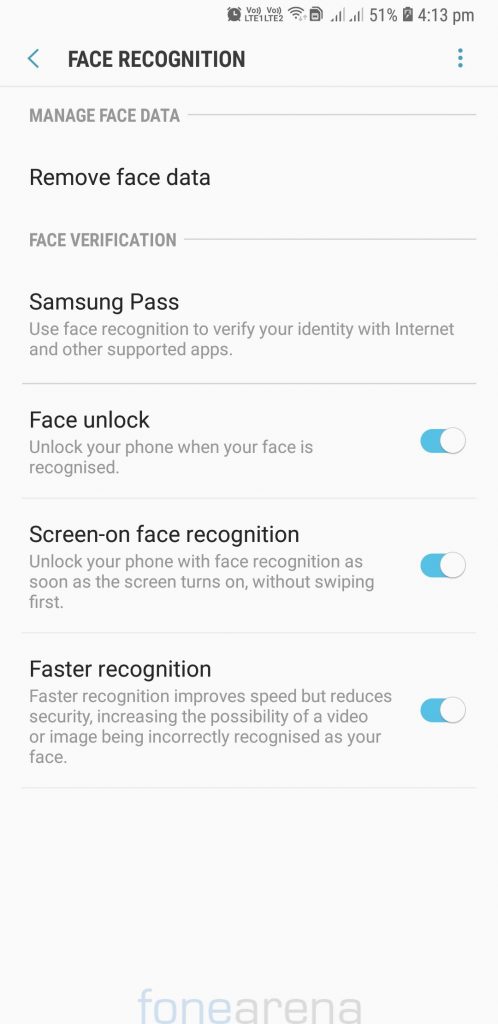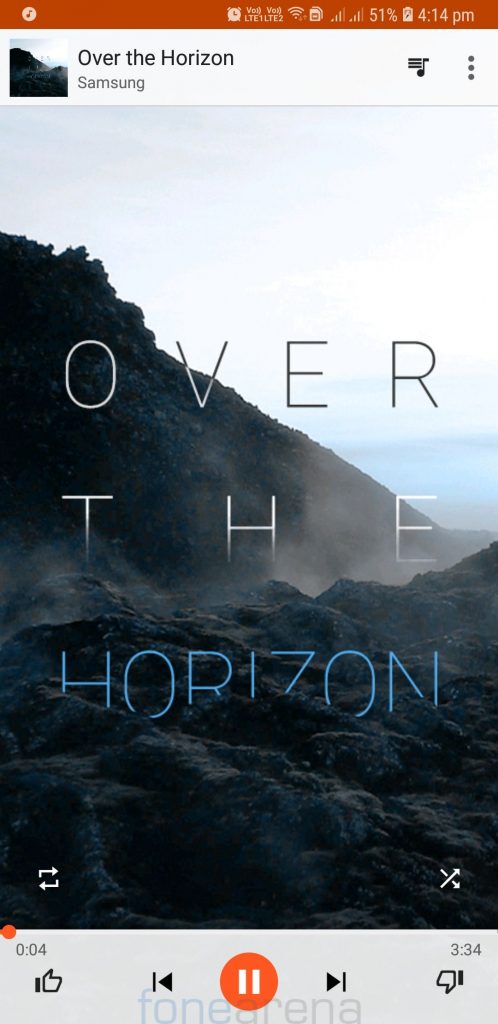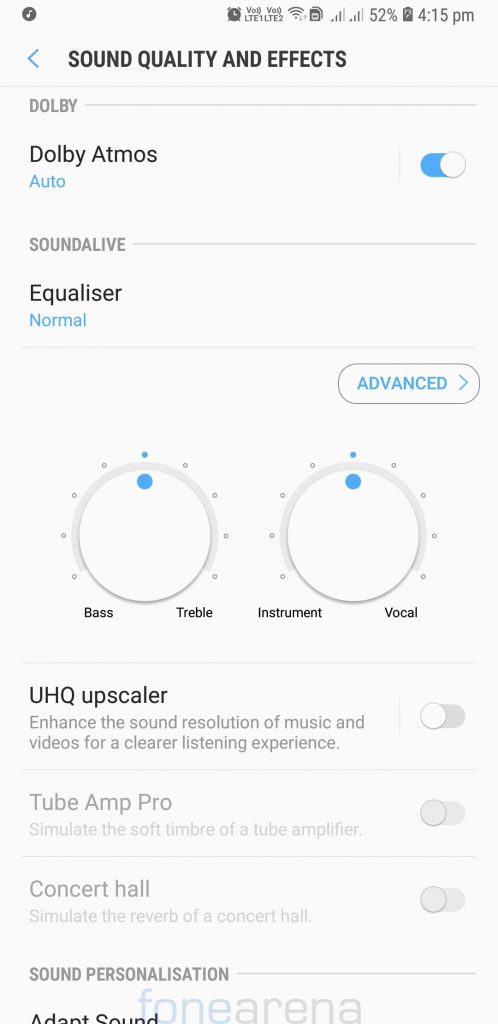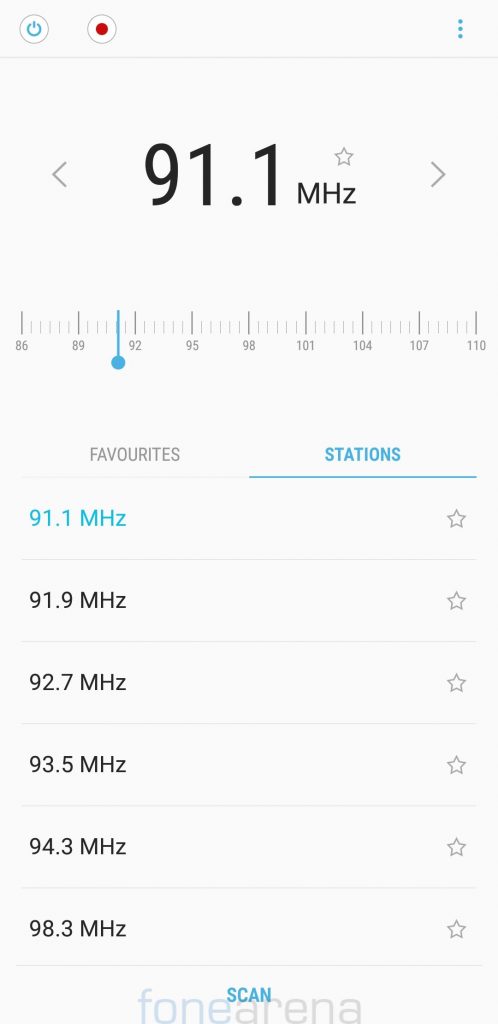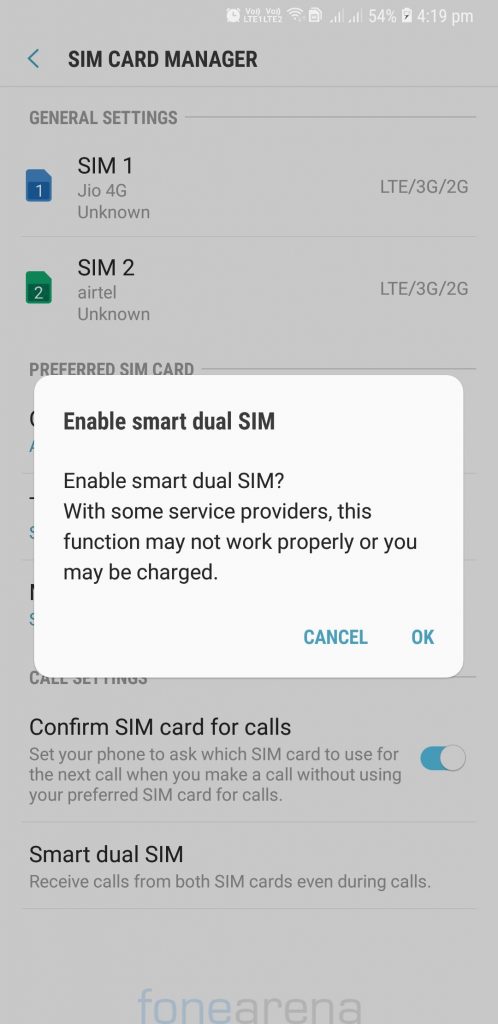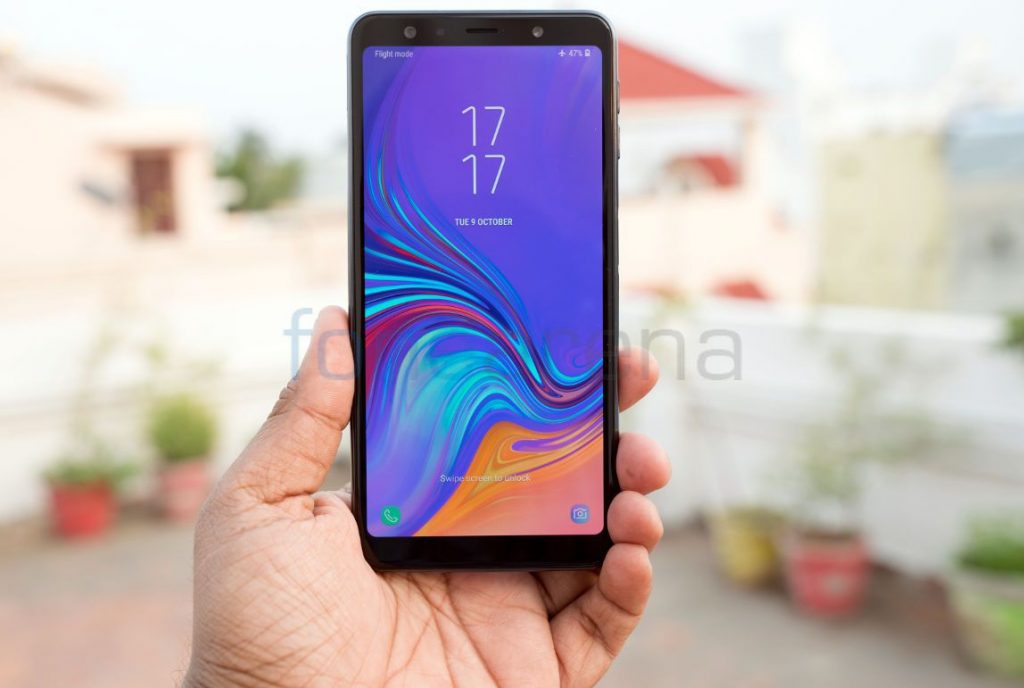
Samsung launched the new Galaxy A7 (SM-A750F) in September. Here we have the review of smartphone, which is the first from Samsung and one of the first mid-range smartphones to feature triple rear cameras.
Box Contents
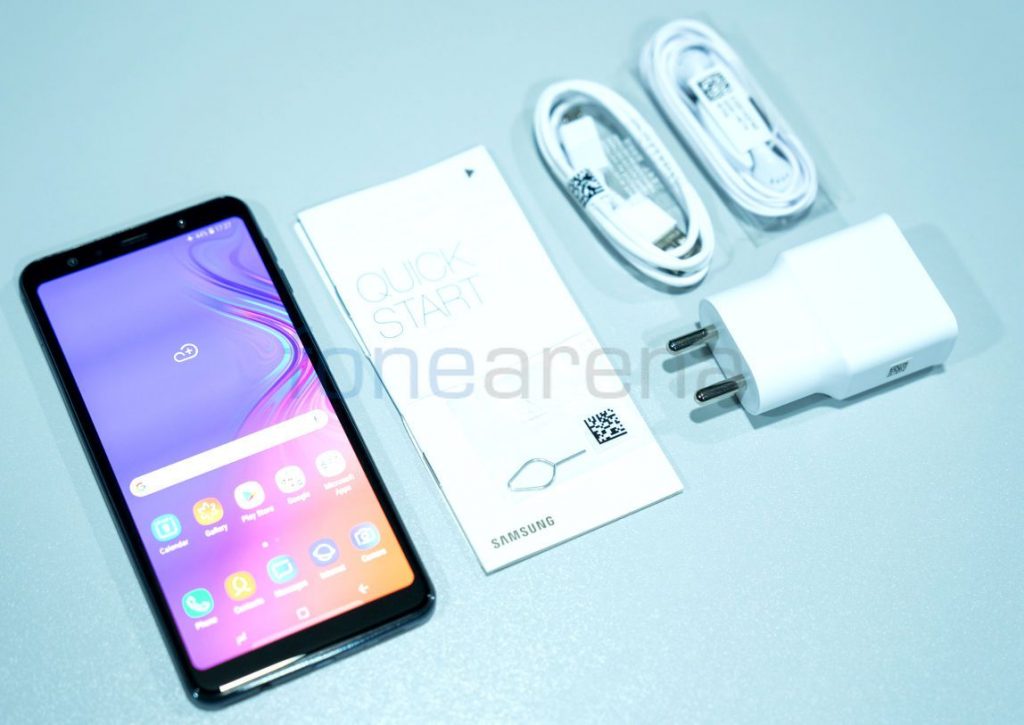
- Samsung Galaxy A7 2018 smartphone in Black color
- 2-pin charger (5V-1.55A)
- Micro USB Cable
- Headset
- SIM ejector tool
- Quick start guide and warranty information
Display, Hardware and Design
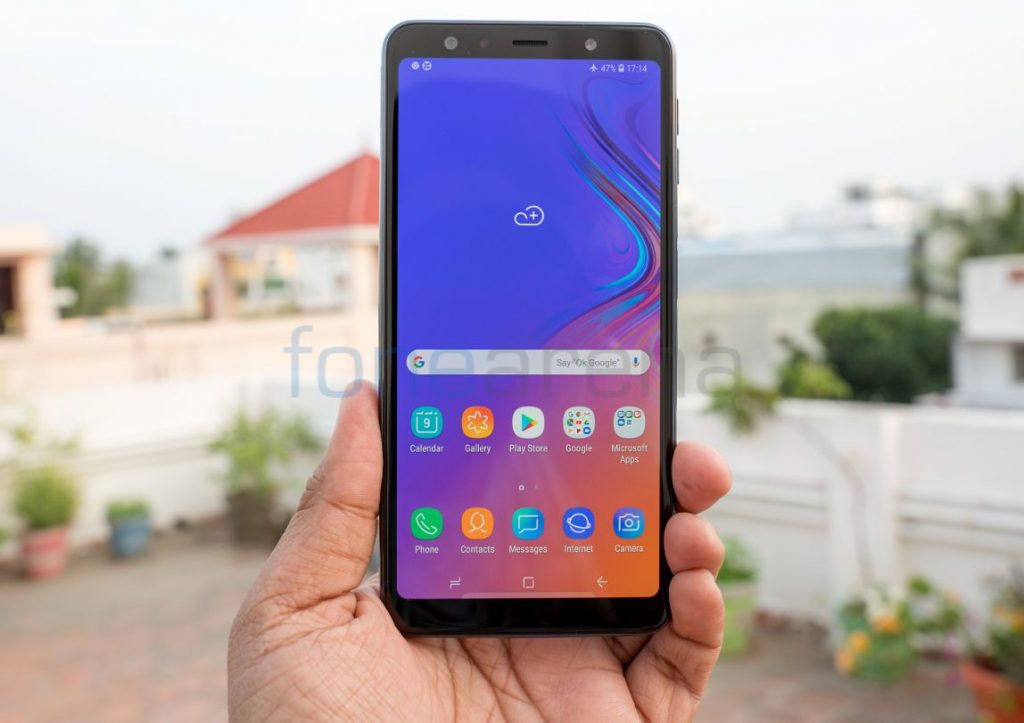
The newGalaxy A7 comes with a 6-inch Full HD+ Super AMOLED Infinity display with a resolution of 1080×2220 pixels at about 410 PPI, aspect ratio of 18.5:9 and a screen-to-body ratio of about 75%, same as the Galaxy A6+. Since the phone has AMOLED display, blacks are perfectly black.
Due to the aspect ratio content doesn’t extend to the sides of the phone when you are watching normal 16:9 videos. If you want it to extend to the sides, you have to pinch the screen to fill the content. If you are watching a video in 21:9 aspect ratio, which has the benefit of removing black bars on the top and bottom of screens, the software stretches the image to fit the 21:9 format and allows you to watch the video as it more naturally.
Similar to the other top-end Samsung phones, there is Blue light filter that is said to reduce eye strain by limiting the amount of blue light emitted by the screen. You can’t adjust the screen resolution like the S8 and Note8 phones, but change font size and style and select apps that you want to use in the full screen aspect ratio. There is Always on display that shows up in the lockscreen when the phone is in standby. Always on display doesn’t consume a lot of power, but still it takes up some power.
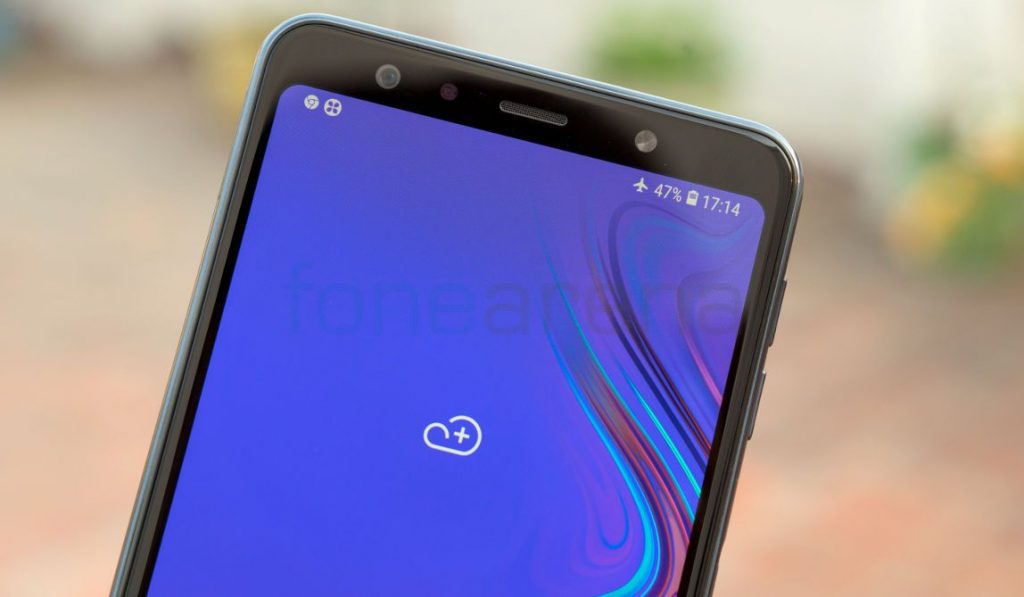
On the top, there are a lot of sensors. Next earpiece, you can find the usual set of proximity and ambient light sensors and LED flash, on the left there is a 24-megapixel front camera with f/2.0 aperture. The phone has gyroscope and magnetic sensor, otherwise known as magnetometer for VR, but it doesn’t have a notification LED.
The phone has shiny frame which feels a bit cheap, however it doesn’t slip out of your hands easily. On the right side, there is a power button that also includes a fingerprint sensor and the volume rockers. On the left side there is a single tray that houses dual nano SIM slots and a microSD card slot that accepts cards up to 512GB. At the bottom, there is a 3.5mm audio jack, micro USB port, loudspeaker grill and the primary microphone. It is a good thing that Samsung has provided dedicated dual SIM and microSD card slots when there are a lot of phones that come with hybrid SIM arrangement.

On the back, there is a 24-megapixel primary sensor with f/1.7 aperture, secondary 8-megapixel 120° Ultra Wide Lens for wide-angle photos and a third 5-megapixel camera to capture depth information for portrait shots. There is a single LED flash below the camera module.

Even though the phone has a huge 6-inch screen, it is compact to hold. It measures 159.8 x 76.8 x 7.5 mm, slightly wider than the A6+. It weighs 168 grams, yet feels light. The glass back is prone to fingerprints. It packs a 3300mAh battery.
Camera
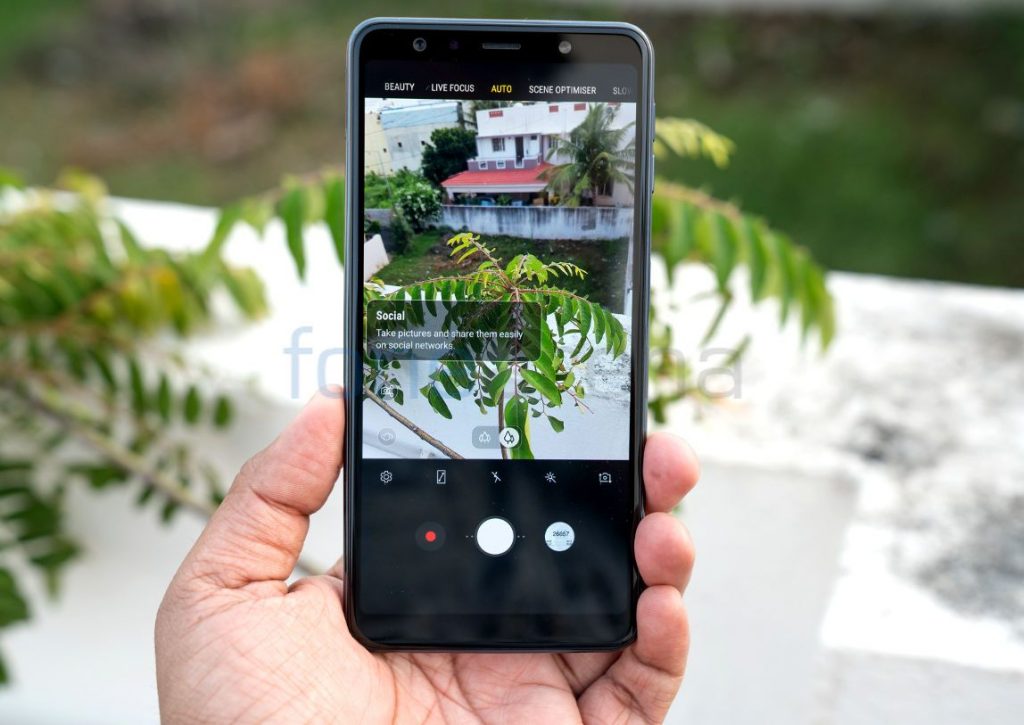 The phone has a 24-megapixel primary Sony IMX576 sensor with f/1.7 aperture, secondary 8-megapixel 120° Ultra Wide Lens for wide-angle photos and a 5-megapixel camera to capture depth information for portrait shots. It also has a 24-megapixel front camera with LED flash. This combines four pixels into one pixel in low light conditions, says OnePlus.
The phone has a 24-megapixel primary Sony IMX576 sensor with f/1.7 aperture, secondary 8-megapixel 120° Ultra Wide Lens for wide-angle photos and a 5-megapixel camera to capture depth information for portrait shots. It also has a 24-megapixel front camera with LED flash. This combines four pixels into one pixel in low light conditions, says OnePlus.
Since this has dual rear cameras, there is Live Focus that lets you adjust the bokeh effect — the aesthetic quality of the blur produced in the out-of-focus parts of an image — to change the depth of field of a shot. You can control the intensity of the overall blur effect and apply it before taking the image in preview mode, or after capturing the photo in the Gallery app. There is selfie portrait option for the front camera that uses software to blur the background.
Since this comes with an 120° Ultra Wide Lens, you can switch between the normal 78-degree Field Of View main camera and 120-degree Field Of View wide-angle camera easily from the main sensor.
It has Auto mode, Panorama, Pro, Beauty as well as Pro mode to adjust ISO, Shutter speed, focus, white balance and exposure manually. It also comes with a new Scene Optimiser mode that can detect 19 different scenarios such as food, text, greenery, sky, flower, nightview and more & optimises each shot to give perfect picture composition. It also has AR Emoji that lets you add stickers and create your own Emoji.
Coming to the image quality, daylight shots are good and the camera captures a good amount of detail, creates really well exposed photos with good dynamic range and detailing, and dynamic range can further be improved enabling HDR mode. The autofocus speeds are fast and accurate. Macro shots are good as well. Dual-camera Live focus mode clearly blurs out the background, and the wide-angle lens is useful in several places, however the edges look a bit curved due to the lens. Low-light performance is decent, but the night mode helps.
The 24MP front camera with facial recognition technology is good for capturing selfies. Selfie flash helps in low-lighting conditions. The front camera has beautify features to adjust skin tone, spotlight and more features. It also has selfie portrait, but it is not perfect since it uses software.
Check out some camera samples (Click the image for the full resolution sample).
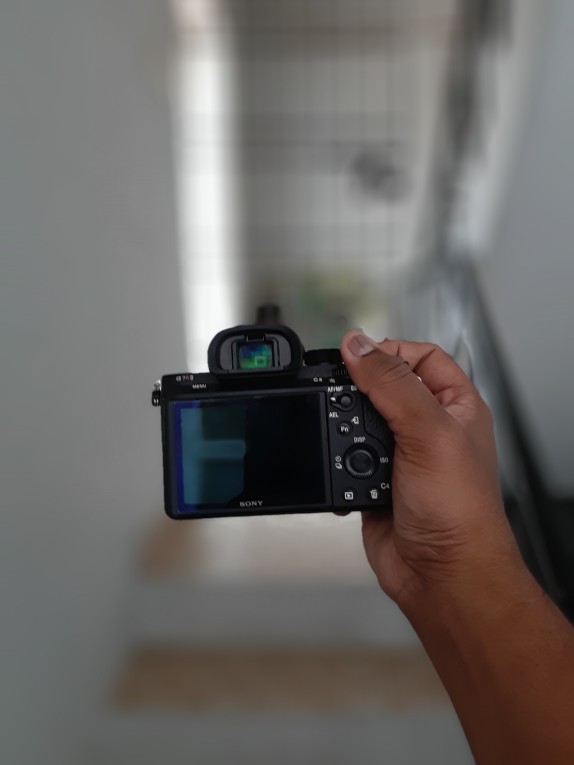

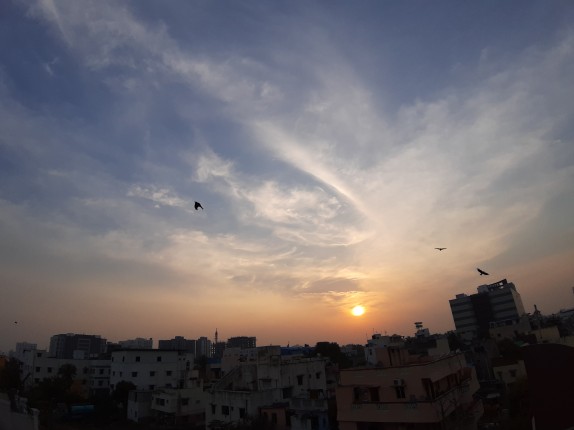

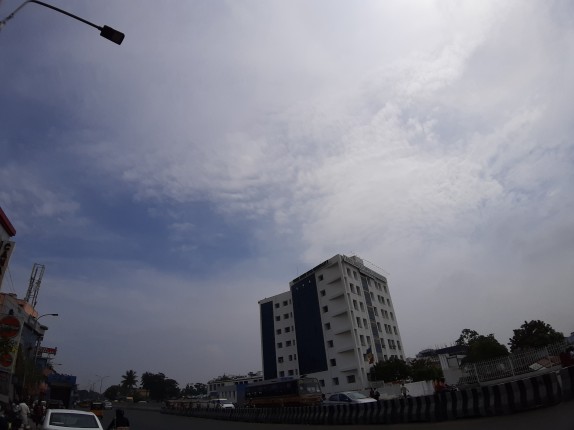

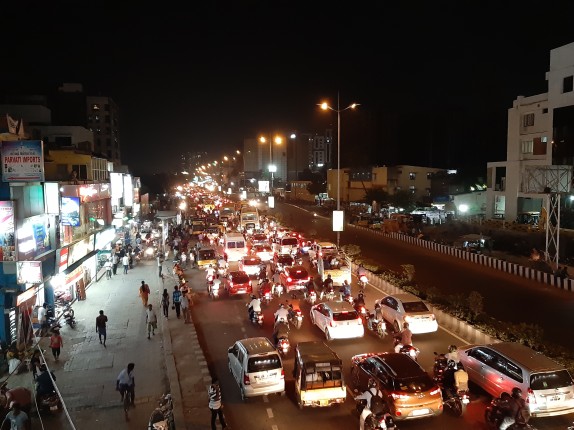

It can record videos at maximum 1080p resolution at 30 fps, even though it has support for 4K recording. It has slow-motion video recording that can record videos at 120 fps. It also has hyperlapse mode to shoot hyperlapse videos at 1080p resolution. Video quality is decent, and the audio crisp since it has a secondary microphone.
Check out the complete set of camera samples here.
Software, UI and Apps
Coming to the software, the phone runs on Android 8.0 (Oreo) with Android security patch for September 2018. Samsung has not announced when the phone will get Android 8.1 update or if it will get Android P. On the top of Oreo, it has Samsung Experience version 9, which is the company’s new UX that is more refined compared to its TouchWiz UX. The drop-down notification shade shows six toggles on the top, and more when you swipe down again. You can easily change the button order and the button grid (3×3, 4×3, 5×3). There are brightness control slider and option to choose SIM cards easily.
It has vertical swiping interface by default instead of separate apps button, so to navigation between the home screen and app tray you need to swipe up or down. You have option to add apps screen button to the home screen. You can simultaneously move multiple apps into a folder easily. You can tap and hold an app icon to open a quick options menu that lets you perform tasks such as uninstalling apps or moving them to Secure Folder without having to open the app. App icons and typography have been changed according to the new design language.
The advanced features option has Smart stay to keep the screen on while you are looking at it, Games Launcher that gathers your games downloaded from Play Store and Galaxy Apps into one place for easy access and one-handed operation mode that lets you use the phone easily with one hand. Similar to other Android phones it has Multi Window mode that was first introduced by Samsung several years back.
Other options include Smart capture to capture the current screen and scrollable area, and crop and share the screenshot immediately, Palm swipe to capture a screenshot, direct call to make a voice call by picking up and holding the device near your ear while viewing call, message, or contact details, Smart alert to set the device to alert you if you have missed calls or new messages when you pick up the device, Easy mute to mute incoming calls or alarms by using palm motions or facing the device’s screen downwards, Swipe to call or send message, and Panic mode to Send SOS message by pressing the Power key three times, including option to sound recordings along with the message to the recipients.
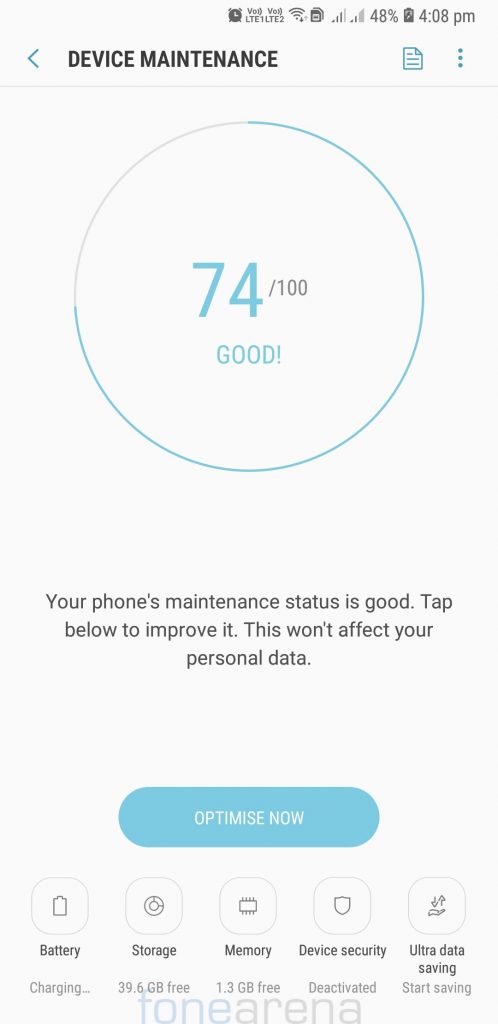
The Device maintenance option lets you manage your device’s battery life, storage, RAM usage, and security all in one place. The Samsung Secure Folder that lets you save your personal data and information.
Apart from the usual set of utility apps and Google Apps, the smartphone comes with Facebook app and Microsoft Apps — Word, Excel, PowerPoint, OneDrive and LinkedIn. You get option to install apps when you are setting up the phone. It has Amazon, Prime Video, Dailyhunt and Samsung Max apps. The phone has Samsung Pay Mini, which is Samsung’s own payment service. It has Bixby Assistant that was first introduced with the S8 series. You can slide to the left to view the Bixby screen or press and hold the dedicated Bixby button to launch it.
Out of 4GB of RAM, you get 3.7GB of usable RAM, out of which about 2GB of RAM is free when the default apps running in the background. Out of 64GB of internal storage, 52GB of storage is usable.
Fingerprint Sensor and Face unlock
The fingerprint sensor is present on the right side of the phone, which is not hard to access, but this is suitable only for right-handed users since the thumb rests on the power button only when you hold the phone on the right. It immediately unlocks phone just by keeping your finger on the home button so that you don’t have to press it. You can add up to 3 fingerprints. It can also be used for Samsung Pay in markets where the service is available and for Samsung Pass to verify your identity with browser and other supported apps. It has support for Face recognition, which doesn’t work well if the lighting is poor in the room, if you are wearing glasses, hats, or use heavy makeup. But it is quick to unlock the phone.
Music Player and FM Radio
Google Play Music is the default music player. It has equalizer, Dolby Atmos, UHQ upscaler, Surround and Tube Amp Pro sound effects that can be enabled from the settings. All these improve the audio when listening through earphones. It has FM Radio support with support for recording. That said, audio through the bundled headset is decent, but using good third-party headphones makes it better. Loudspeaker output from the mono speaker is just decent, but it could have been better.
Dual SIM and Connectivity
The connectivity options include, Wi-Fi 802.11ac (2.4/5GHz), Bluetooth v5 and GPS with GLONASS. It has support for USB OTG. It has 4G connectivity with support a lot of bands and has Voice-over-LTE (VoLTE) support for Reliance Jio, Airtel and more. It also has dual 4G VoLTE support, which is good. The dialer and messaging have familiar UI. Since this is a dual SIM phone, you get option to select either SIMs when calling or sending text message. There are no call drops and the earpiece volume is good.
You can set preferred SIM for voice call, text and data from the SIM card manager. As usual, it has Smart Dual SIM feature, similar to other latest Samsung Dual SIM smartphones. This automatically forwards calls from the phone number on SIM 2, even if a user is on the phone with SIM 1’s number. There is a new option called confirm SIM card for calls so that it asks which SIM card to be used for the next call when you make a call without your preferred SIM card for calls.
Performance and Benchmarks
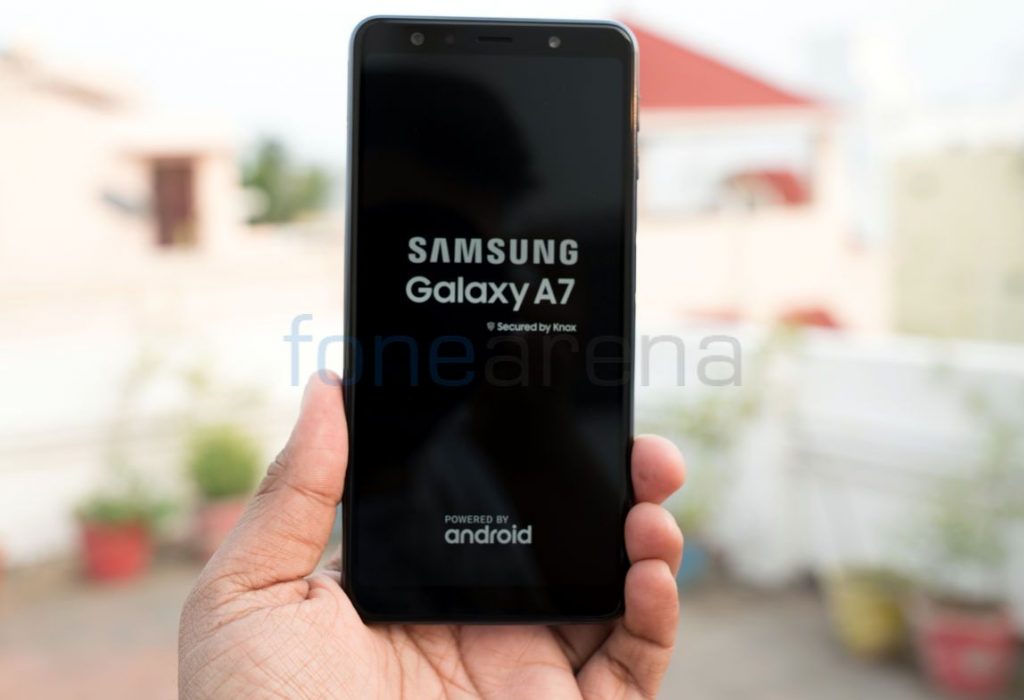
It is powered by an Octa-Core Samsung Exynos 7885 processor that has two ARM Cortex-A73 CPU cores clocked at up to 2.2GHz per core and six ARM Cortex-A53 cores clocked at up to 1.6GHz per core. It has 4GB of RAM and packs a Mali-G71 GPU. Performance is good without any lags, but the gaming performance is not on par with most other phones in the price range. Check out some synthetic benchmark scores below.
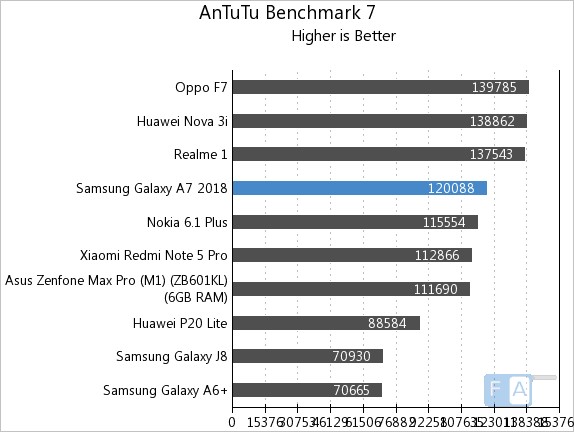
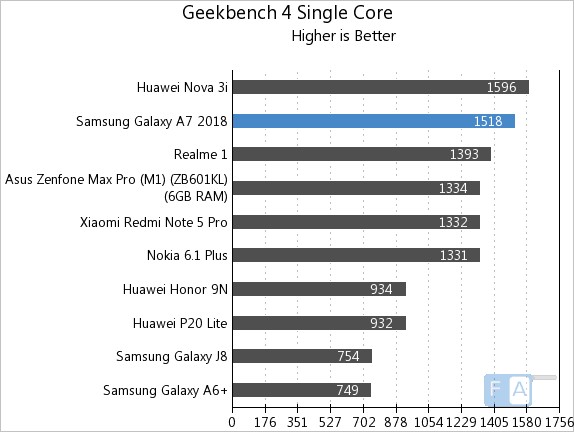
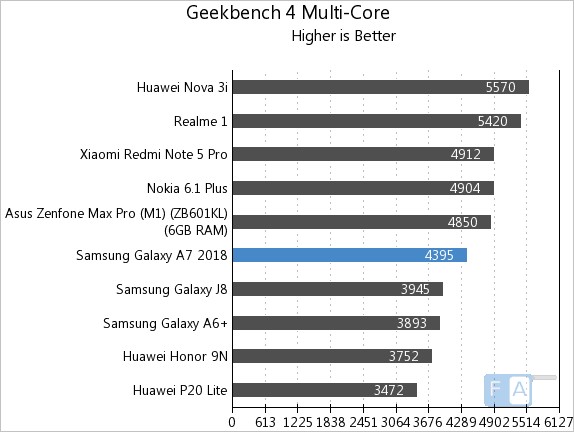
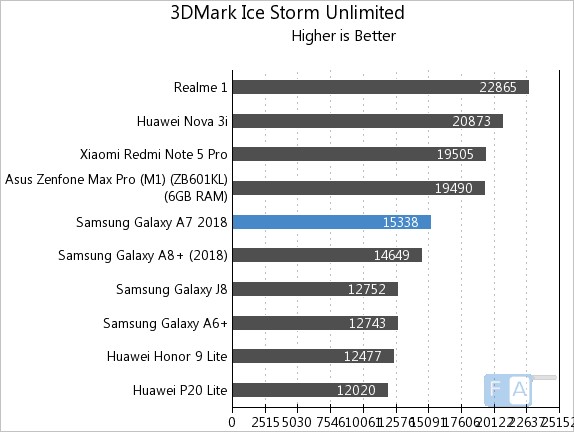
Battery life

Coming to battery life, the 3300mAh battery lasts for a day even with heavy use and lasts for more than a day with average use. Based on my usage, with dual SIMs, it lasted for about 1.5 days. It has Medium power saving mode that reduces brightness, reduces the CPU speed and turns off the Always On Display. The Max mode does all this and puts the screen to low-power mode. There is App power monitor that alerts you when an app is using more power so that you can close it.
In our battery test the smartphone achieved One Charge Rating of 16 hours and 45 minutes, which is good for a phone with a 3500mAh battery. It doesn’t have adaptive fast charging so it takes about 2 and half hours to charge from 0 to 100% and 0 to 50% takes 1 hour. We will bring you the complete set of battery life test results soon.
Conclusion
Overall, the Galaxy A7 (2018) is a decent mid-range smartphone at a starting price of Rs. 23990. It has a glass back the gives a premium look, triple rear cameras, including a wide-angle lens, Full HD+ AMOLED screen and offers a good battery life as well. However, the SoC is not the best for gaming and the phone has a micro USB port without fast charging. It is available exclusively from Flipkart. To summarize, here are the pros and cons of the smartphone.
Pros
- Large 6-inch FHD+ AMOLED Infinity display
- Good cameras
- Good battery life
- Decent build quality
Cons
- Micro USB without fast charging
- Fingerprint sensor is not comfortable for left-handers
Photography by Siraj

